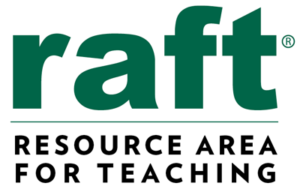Tetrix
In this activity, students work together to build the 3-dimensional analog to the popular fractal “Sierpinski Gasket”. The more students that work on the large fractal, the more impressive it will be!
Standards
Idea Sheets are cross-referenced to subjects listed in the Common Core, Next Generation Science Standards, and California Content Standards.
Mathematical Practices: 1. Make sense of problems and persevere in solving them. 2. Reason abstractly and quantitatively. 3. Construct viable arguments and critique the reasoning of others. 4. Model with mathematics. 5. Use appropriate tools strategically. 6. Attend to precision. 7. Look for and make use of structure. 8. Look for and express regularity in repeated reasoning. ||Common Core Mathematics||Grade 4||Mathematical Practices|||4.OA.5. Generate a number or shape pattern that follows a given rule. Identify apparent features of the pattern that were not explicit in the rule itself. For example, given the rule “”Add 3″” and the starting number 1, generate terms in the resulting sequence and observe that the terms appear to alternate between odd and even numbers. Explain informally why the numbers will continue to alternate in this way.||Common Core Mathematics||Grade 4||Operations And Algebraic Thinking||Generate And Analyze Patterns|||Mathematical Practices: 1. Make sense of problems and persevere in solving them. 2. Reason abstractly and quantitatively. 3. Construct viable arguments and critique the reasoning of others. 4. Model with mathematics. 5. Use appropriate tools strategically. 6. Attend to precision. 7. Look for and make use of structure. 8. Look for and express regularity in repeated reasoning. ||Common Core Mathematics||Grade 5||Mathematical Practices|||5.OA.3. Generate two numerical patterns using two given rules. Identify apparent relationships between corresponding terms. Form ordered pairs consisting of corresponding terms from the two patterns, and graph the ordered pairs on a coordinate plane. For example, given the rule “”Add 3″” and the starting number 0, and given the rule “”Add 6″” and the starting number 0, generate terms in the resulting sequences, and observe that the terms in one sequence are twice the corresponding terms in the other sequence. Explain informally why this is so.||Common Core Mathematics||Grade 5||Operations And Algebraic Thinking||Analyze Patterns And Relationships|||Mathematical Practices: 1. Make sense of problems and persevere in solving them. 2. Reason abstractly and quantitatively. 3. Construct viable arguments and critique the reasoning of others. 4. Model with mathematics. 5. Use appropriate tools strategically. 6. Attend to precision. 7. Look for and make use of structure. 8. Look for and express regularity in repeated reasoning. ||Common Core Mathematics||Grade 6||Mathematical Practices|||6.EE.1. Write and evaluate numerical expressions involving whole-number exponents.||Common Core Mathematics||Grade 6||Expressions And Equations||Apply And Extend Previous Understandings Of Arithmetic To Algebraic Expressions|||Mathematical Practices: 1. Make sense of problems and persevere in solving them. 2. Reason abstractly and quantitatively. 3. Construct viable arguments and critique the reasoning of others. 4. Model with mathematics. 5. Use appropriate tools strategically. 6. Attend to precision. 7. Look for and make use of structure. 8. Look for and express regularity in repeated reasoning. ||Common Core Mathematics||Grade 7||Mathematical Practices|||Mathematical Practices: 1. Make sense of problems and persevere in solving them. 2. Reason abstractly and quantitatively. 3. Construct viable arguments and critique the reasoning of others. 4. Model with mathematics. 5. Use appropriate tools strategically. 6. Attend to precision. 7. Look for and make use of structure. 8. Look for and express regularity in repeated reasoning. ||Common Core Mathematics||Grade 8||Mathematical Practices|||Mathematical Practices: 1. Make sense of problems and persevere in solving them. 2. Reason abstractly and quantitatively. 3. Construct viable arguments and critique the reasoning of others. 4. Model with mathematics. 5. Use appropriate tools strategically. 6. Attend to precision. 7. Look for and make use of structure. 8. Look for and express regularity in repeated reasoning. ||Common Core Mathematics||High School||Mathematical Practices|||HS.F.IF.3. Recognize that sequences are functions, sometimes defined recursively, whose domain is a subset of the integers. For example, the Fibonacci sequence is defined recursively by f(0) = f(1) = 1, f(n+1) = f(n) + f(n-1) for n = 1.||Common Core Mathematics||High School||Interpreting Functions||Understand The Concept Of A Function And Use Function Notation|||HS.F.IF.9. Compare properties of two functions each represented in a different way (algebraically, graphically, numerically in tables, or by verbal descriptions). For example, given a graph of one quadratic function and an algebraic expression for another, say which has the larger maximum.||Common Core Mathematics||High School||Interpreting Functions||Analyze Functions Using Different Representations
1.4 Determine the prime factors of all numbers through 50 and write the numbers as the product of their prime factors by using exponents to show multiples of a factor (e.g., 24 = 2 x 2 x 2 x 3 = 23 x 3).||CA Mathematics||Grade 5||01. Number Sense||1.0 Students compute with very large and very small numbers, positive integers, decimals, and fractions and understand the relationship between decimals, fractions, and percents. They understand the relative magnitudes of numbers.|||2.1 Understand negative whole-number exponents. Multiply and divide expressions involving exponents with a common base.||CA Mathematics||Grade 7||01. Number Sense||2.0 Students use exponents, powers, and roots and use exponents in working with fractions.|||02.0 Students understand and use such operations as taking the opposite, finding the reciprocal, taking a root, and raising to a fractional power. They understand and use the rules of exponents.||CA Mathematics||Grade 8 – 12||01. Algebra I|||4.0 Students are familiar with the standard distributions (normal, binomial, and exponential) and can use them to solve for events in problems in which the distribution belongs to those families.||CA Mathematics||Grade 8 – 12||04. Probability and Statistics
- Grades 3-5
- Grades 6-8
- Math
